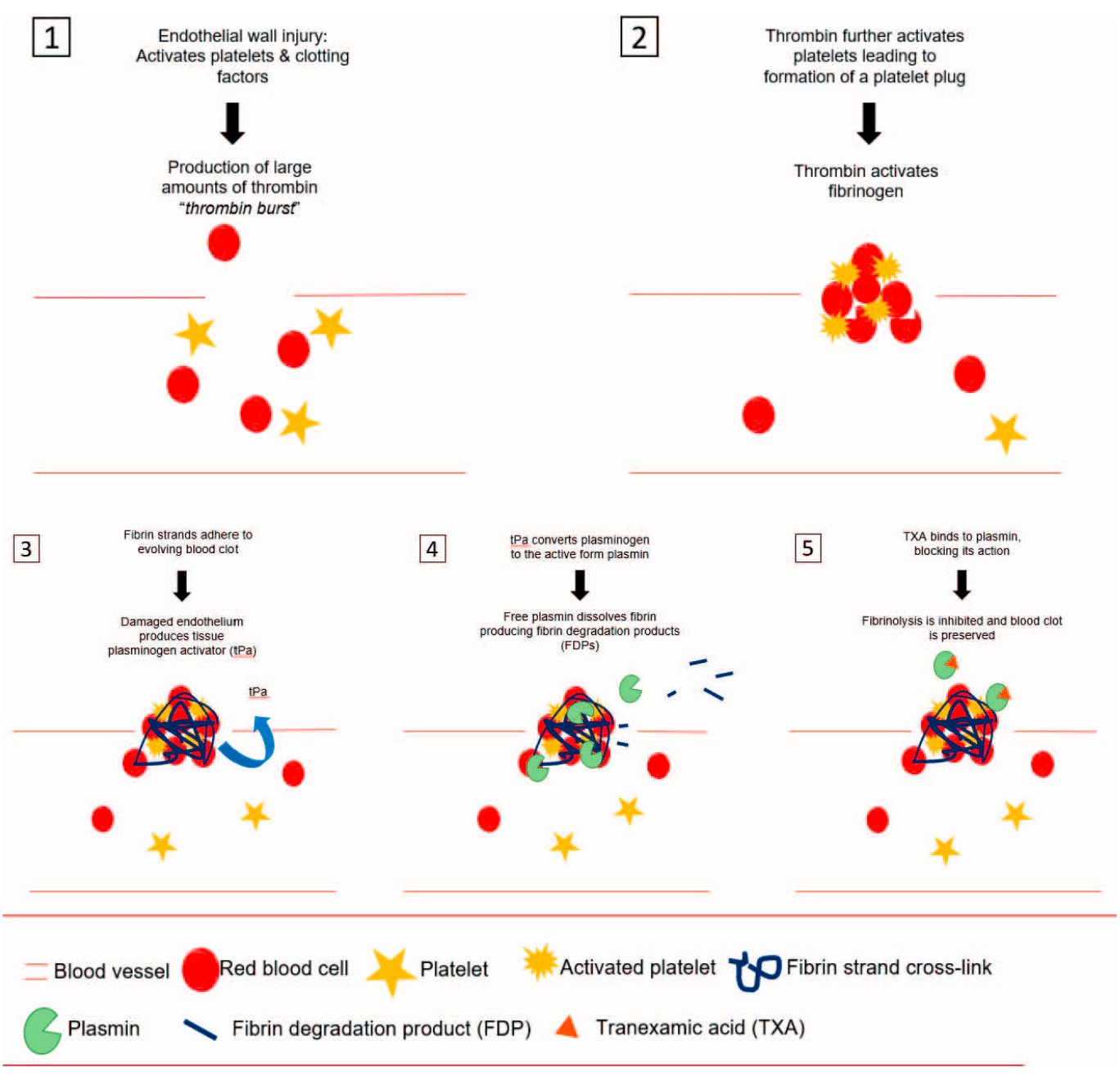Tranexamic Acid Mechanism of Action
This includes tooth extractions. To investigate the effects and mechanism of action of topical TA in the treatment of.
In melasma the hypothesised mechanism of action of tranexamic acid.
. 121 Mechanism of Action. Tranexamic acid is a synthetic derivative of lysine used as an antifibrinolytic in the treatment and prevention of major bleeding. Tranexamic acid is a trans-stereoisomer of 4-aminomethylcyclohexane-carboxylic acid and has a molecular weight of 157.
The therapeutic window for TXA administration and the mechanism of action has been under review. The only FDA-approved usage for tranexamic acid TXA is for heavy menstrual bleeding and short-term prevention in patients with hemophilia. Tranexamic acid is a synthetic lysine amino acid derivative which diminishes the dissolution of hemostatic fibrin by plasmin.
Experiments using combinations of aprotinin and tranexamic acid in the clot lysis system confirm the complementary nature of inhibitory mechanisms and suggest a slight synergism. In the presence of tranexamic acid. Cyklokapron is used to prevent bleeding in people with hemophilia who need to have a tooth.
Tranexamic acid prevents enzymes in the body from breaking down blood clots. Clear colourless solution 500mg in 5ml. Tranexamic acid is a.
The therapeutic window for TXA administration and the mechanism of action has been under review. Tranexamic acid TXA is commonly being used to reduce melanin synthesis in patients with melasma and also used as a raw material for functional whitening cosmetics although its. 5 mouthwash can be made by crushing a 500mg tablet and dissolving in 10 mL of water.
While its mechanism of action is similar to aminocaproic acid tranexamic acid is about 10 times more potent in this. Tranexamic acid TXA may prevent GCX degradation. Mechanism of Action.
Tranexamic acid is a synthetic lysine amino acid derivative which diminishes the dissolution of hemostatic fibrin by plasmin. Although tranexamic acid was first discovered more than 50 yr ago its clinical utility to reduce blood loss and transfusion requirements has only been popularized in the past decade. The mechanism of action of tranexamic acid in dermatological disorders is not fully understood.
Tranexamic acid is a competitive inhibitor of plasminogen activation. Tranexamic acid TXA may prevent GCX degradation. It possesses a similar mechanism of action to aminocaproic.
In the presence of. Tranexamic acid TA has been suggested as an effective treatment for melasma.

Tranexamic Acid Wfsa Resources
Mechanism Of Action Of Txa Profibrinolytic Effects Are In Green And Download Scientific Diagram

Tranexamic Acid Mechanism Of Action Txa Is An Anti Fibrinolytic Grepmed

Mechanism Of Action Of Tranexamic Acid Ta The Fibrin Binding Site On Download Scientific Diagram

0 Response to "Tranexamic Acid Mechanism of Action"
Post a Comment